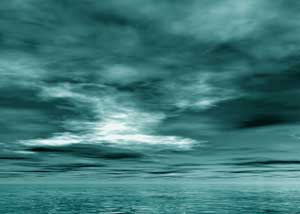Look Closely:
Todd Hido and Ted Kincaid photograph what isn’t there.
By John Devine, HOUSTON PRESS
One of the more curious aspects in the history of photography is the quixotic, and lasting, interest in photographing what can’t be seen. No sooner did the daguerreotype confer the ability to capture reality than early enthusiasts began attempting to use the new device to prove the reality of the unreal. As early as the mid-1850s, reports of spectral emanations hovering in daguerreotype portraits began to appear, with all the attendant metaphysical speculation and hucksterism you might expect. The long exposures required by early photography lent themselves to mistakes or fraud: Let one person move and — presto! — instant ghost. In one hilarious photograph of a séance, the ectoplasmic presence of a conjured spirit is spewing from the medium’s nose. And there were other, more bizarre incidents. In the Case of the Cottingley Fairies, even Arthur Conan Doyle accepted the validity of photographs showing two teenage girls at play in the woods with fairies and gnomes. The creator of that master of ratiocination, Sherlock Holmes, was duped by paper cutouts pinned to trees. His logic? “Two children of [their] class” could not pull off such “photographic tricks.”
Elementary, no doubt.
To be fair, there is something almost magical in the process of photography, in the production of images by exposing a light-sensitive medium to light. And because the photograph is a “reading” of light, sometimes the camera sees things the eye does not. A very mundane example is the red-eye phenomenon, when the camera flash reflects off the retina of the subject. But sometimes what the camera sees is more subtle –and more mysterious. Todd Hido and Ted Kincaid, two photographers showing at Inman Gallery, both capitalize on the subtlety of the camera’s eye, but in very different ways.

"Seascape 418"
Kincaid exerts a fair amount of control over his photographs, even creating his own subject matter: digital drawings with simple geometric two-toned designs and patterns. He photographs a drawing, slightly (and carefully) out of focus, so that the resulting image is blurred yet retains a crispness of detail. Once he has an image he’s happy with, he destroys both the drawing and the negative, creating a unique object and subverting the usual photographic practice of limited edition prints; with Kincaid’s work, it’s one to a customer. But his real interest is what happens between drawing and photograph. Little details show up in the photographs that he maintains were not seen in the drawings: overlapping rings, shadows, halos and auras. In capturing the effect of light on the drawing, Kincaid freezes the ephemeral moment, as does anyone who takes a photo. But because his subject is abstract and his medium is black and white, the evidence of that moment stands in relief. Kincaid’s enigmatic compositions become acts of contemplation upon the nature of light and time.
Todd Hido’s photographs are also enigmatic, if more familiar and, therefore, more emotional. His photographs have the unreal appearance of staged sets, but these are real houses in real neighborhoods, where real people live. The long exposures required to photograph with ambient light at night, along with the detail provided by a large-format camera, give these images an eerie kind of hyper-reality. If they were sets, they’d be in a David Lynch movie. The weird light suffusing each photograph draws you in to notice vaguely unsettling details like a bent aluminum window frame and an odd shopping cart cowering under the gigantic shadow of a tree in Untitled #2604-0 (2000), or the sad, battered window blind in Untitled #2214 (1999). There is drama and suspense in these scenes, mainly because nothing is happening. And that “nothing” gives them poignancy; there are no people in Hido’s photographs, only signs of life. In every one, there is at least one lit window, a spectral beacon signaling that someone’s there, a castaway at the end of the cul-de-sac. Color and composition come into play, too. In Untitled #2871-A (2001), the cool blue light and the stiff, formal alignment of the TV antennae convey a chill that has little to do with the snow on the ground. In Untitled #2736 (2000), the yellow grass almost looks like fire racing up the lawn toward a house that is bathed in the same yellow light; its neighbor, a suburban cyclops with a single lit window, looks on dispassionately. Hido’s nightscapes are potential narratives, crowded with what isn’t there and deafening in their silence.
In a sense, photography has always been about the presence of absence, a record of what was and is no longer. And in the works of Ted Kincaid and Todd Hido, there is the sense of loss and nostalgia, an awareness of the passing of a unique moment. But there is also potential in these absences. Both of these young photographers remind us that there is always more than meets the eye, and that life goes on even if no one is looking.
